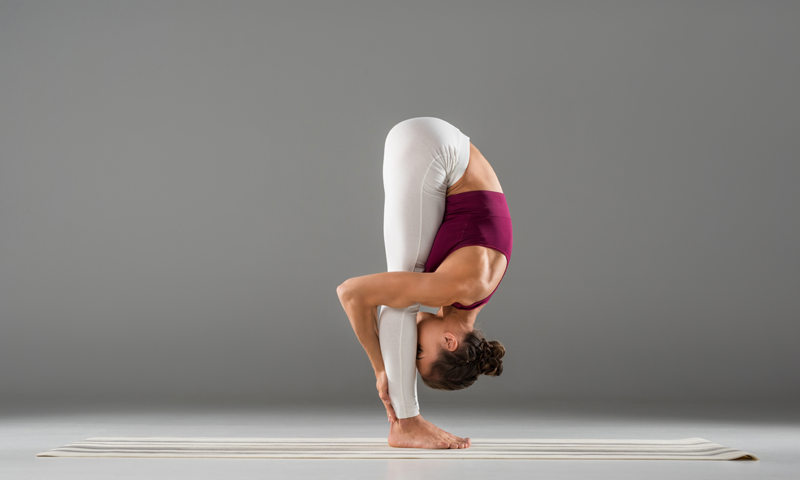
Yoga: How to Go from Beginner to Expert?
June 15, 2018
How Yoga Makes You Stronger
June 28, 2018What is Yoga Sutra?

Written in 400 C.E, the Yoga Sutras are a collection of texts by the sage, Patanjali. The collection holds a total of 196 Sutras, which each describe an element of classical yoga philosophy. Today, the Sutras are often referred to as threads or discourses. The collection is divided into four different books; the first book is Samadhi Pada, which explains what yoga is, the second book is Sadhana Pada, which explains how to gain a yogic state, the third book is Vibhuti Pada, which details the benefits of yoga, and the final book is Kaivalya Pada, which is all about liberation from suffering. The Yoga Sutras explain how yoga is so much more than physical movement; however, asanas are still a large part of yoga – especially in the West. If you’re interested in practicing yoga poses, be sure to pick up some lightweight yoga pants to allow the body to oxygenate. In this article, we explore ‘what is Yoga Sutra?’ In more detail.
The Eight Limbs of Yoga
Although the Yoga Sutras are broken down into simple verses, reading all 196 requires dedication. Because of this, the Sutras have been translated into the Eight Limbs of Yoga. Comprising of the most important parts of the Sutras, the Eight Limbs of Yoga sum up the yoga philosophy.
The first limbs are Yama and Niyama. Translating to ‘control’ (Yama), and ‘non-control’ (Niyama), they are regarded as the main commandments of yoga. These limbs can be explained simply as the do’s and don’t of the practice. Yama teaches yogis to avoid violence, stealing, dishonesty, and greed, while Niyama promotes contentment, cleanliness, and dedication to the Supreme Lord. The third limb is Asana. When translated from Sanskrit, Asana means ‘posture’. Most disciplines interpret this limb as an instruction to practice physical postures. However, certain styles believe that the limb holds a deeper message. In Raja yoga, Asana is interpreted as a still posture to facilitate meditation. The fourth limb is Pranayama. In Sanskrit, this limb translates to ‘breath’ or ‘life energy’. Many yogis think of Pranayama as the state in which the energy is reversed. Instead of flowing out of the body, it travels inward toward the higher self. The fifth limb is Pratyahara, which focusses solely on concentration. Many disciplines use Pratyahara to learn ancient yogic techniques. The sixth limb is Dharana, which refers to the balance of inner awareness. Yogis believe that our inner awareness is unstable until Dharana has been achieved. The seventh limb is Dhyana, which focuses on absorption. Regular meditation will teach us how to subconsciously absorb the qualities of meditation. Once we can do this, we can absorb the benefits without having to concentrate. The final limb is Samadhi, which means ‘oneness’. When we learn how to disperse our ego into our inner awareness, Samadhi can be achieved. When this limb has been achieved, there is nothing to stop us from uniting with the higher self.

Why Should You Know Yoga Sutra?
Understand the True Purpose of Yoga
Reading the Yoga Sutras can remind yourself of the true purpose of yoga. Physical asanas have a variety of great benefits including increased strength, reduced stress levels, and improved health; however, traditional yoga is about much more than that. In the Yoga Sutras, Patanjali explains the definition of yoga as “yoga is the stilling of the fluctuations of the mind”. He also explains why we suffer from mind states that are not associated with yoga and explains what we can do about it. Reading the Yoga Sutras allows us to discover the state of wholeness that exists in our subconscious thoughts. Additionally, the books help us to let go of our suffering by embracing yoga as a holistic practice.
Understand How to Reach Happiness
The Yoga Sutras explain how negative thoughts can get in the way of happiness. You may have heard the famous saying ‘the biggest obstacles in our life are the barriers our mind creates’. The Yoga Sutras explain just how true this quote is. The books also explain how to use yoga to prevent this from happening. Learning to let go of negative emotions and to take risks allows us to build a happy, carefree lifestyle.
Understand the History and Traditions of Yoga
The Yoga Sutras help us to understand the history and traditions of yoga. Reading them allows our practice and teaching methods to become more authentic. Whether you are a student or a teacher, everyone is a part of the lineage of yoga. When reaping the benefits of the practice, it’s important to remember where it first came from. Reading the Yoga Sutras allows us to honor the practice that was given to us.
Build a Lifelong Practice
Yoga is often defined as physical asana practice – especially in the West. The Yoga Sutras remind us that yoga is so much bigger than it first seems, and allow us to develop a broader view. While physical asanas may benefit the body when we are young, these movements may become difficult as we age. Understanding the deeper benefits of yoga allows us to build a lifelong practice. Though asanas may be limited by age, other yoga techniques such as meditation, pranayama, and self-study can be used throughout our lives.
In Summary
Whether you’re interested in learning about the Eight Limbs or you’d rather absorb the practice in more detail, the Yoga Sutras can help to develop our yoga knowledge. If finding the time to read all 196 Sutras is a challenge, consider studying the Eight Limbs of Yoga instead. Summing up the main points from the Yoga Sutras, the Eight Limbs of Yoga are a great alternative for busy practitioners. When practicing any aspect of yoga, it’s important to be comfortable. As the warmer months approach us, consider picking up a vest top and a pair of yoga shorts to keep you cool.

